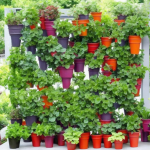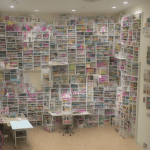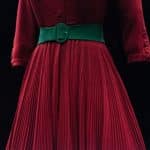In the realm of real estate development, property value is influenced by a multitude of factors. Among them, a rising trend is the integration of public art in urban projects. These initiatives serve not only as aesthetic enhancements but as catalysts for community engagement, creating vibrant, attractive environments that contribute positively to the value of nearby property. This article delves into the strategies employed to enhance real estate value through public art installations.
Public Art and Its Role in Urban Development
Public art is an integral element in urban development. It’s not just about adding a splash of color to the cityscape; it’s about creating spaces where people want to live, work, and visit. Public art can generate a sense of pride among local residents, foster a sense of identity, and promote community cohesion.
In the same genre : What Is the Future of Interactive TV Shows That Allow Viewer Participation?
The concept of placemaking is essential in this context. It is a multifaceted approach to urban planning and design that focuses on creating public spaces that promote people’s health, happiness, and wellbeing. Public art installations can serve as focal points in this process, transforming under-utilized spaces into vibrant community hubs.
The Intersection of Public Art and Real Estate
Public art installations can significantly impact real estate values. High-quality public art can make a place more attractive to potential buyers and tenants, leading to increased demand and, subsequently, higher property values. Public art installations can also contribute to the perception of an area as being innovative, vibrant, and forward-thinking – all qualities that can enhance real estate value.
Also to read : What’s the Best Way to Set Up a Habitat for a Pet Tarantula?
National programs such as the Public Art Program of the National Endowment for the Arts in the US provide guidelines and funding for communities to integrate arts into their public spaces. These programs recognize the potential of public art to stimulate economic development and improve the quality of life for local residents.
Strategies for Incorporating Public Art into Real Estate Development
There are numerous strategies for incorporating public art into real estate development. One approach is to include artists in the early stages of a project. This collaboration can result in innovative design solutions and ensure that the art installation is well-integrated into the overall design of the development.
Another strategy is to involve the community in the selection and creation of public art. This can foster a sense of ownership among local residents, leading to increased community pride and engagement. Additionally, when public art reflects local culture and history, it can strengthen the unique character of a place, making it more desirable to potential buyers and tenants.
The Role of Local and National Programs in Supporting Public Art
Local and national programs play a crucial role in supporting public art. These programs can provide funding, guidelines, and resources that enable communities to incorporate arts into their public spaces. They also often foster collaborations between artists, developers, and community members, ensuring that public art installations benefit all stakeholders.
For example, the National Endowment for the Arts’ Our Town program supports creative placemaking projects that help transform communities into lively, beautiful, and resilient places with the arts at their core. Meanwhile, local initiatives, such as those led by city councils or arts commissions, may offer additional support and resources for public art projects.
Case Study: Public Art in Parks and Its Impact on Real Estate
Public parks are prime locations for public art installations. They offer a blank canvas for artists and can reach a wide audience of park users. Additionally, public art in parks can contribute to a park’s identity, enhance its aesthetic appeal, and create a sense of place.
Consider the impact of public art installations in New York City’s High Line park. Once a disused railway track, it is now a thriving urban park populated with public art installations. The park has been linked to increases in nearby real estate values, demonstrating the potential of public art to contribute positively to urban development and real estate.
Whether it’s a mural on a formerly blank wall, a sculpture in a park, or a light installation in a public plaza, public art can transform spaces and bring communities together. Through careful planning and collaboration among artists, developers, and communities, public art installations can make significant contributions to urban development and real estate value. So, as you plan your next urban project, consider how public art could play a part.
The Impact of Public Art on Affordable Housing Developments
Affordable housing is a crucial aspect of urban development and smart growth. The integration of public art in these spaces has shown promising potential for enhancing their value and desirability. Utilizing art in affordable housing developments can create a more inviting and attractive environment for residents.
In many urban areas like San Francisco, city officials and arts organizations are working together to incorporate public art into affordable housing developments. They aim to create environments that foster civic engagement and community pride. These initiatives are often funded by local and national art programs, demonstrating a commitment to both the arts and affordable housing.
Adding murals, sculptures, or installations to these developments can significantly improve their aesthetic appeal. These artworks can provide a sense of identity and character to otherwise uniform and utilitarian spaces. For example, a mural depicting local history or unique cultural elements can instill a sense of community pride and foster a stronger connection between residents and their environment.
Moreover, these art installations can generate positive economic impact. They can attract visitors, stimulating local businesses, and raising the profile of the area. This, in turn, can lead to increased demand for properties in the area, driving up real estate values.
Incorporating public art into affordable housing developments requires careful planning and a collaborative approach. It involves engaging with artists, architects, residents, and community organizations. This multi-stakeholder approach ensures that the art not only enhances the physical environment but also resonates with the community’s values and aspirations.
Conclusion: The Future of Public Art and Real Estate
The trend of incorporating public art into real estate development shows no signs of slowing down. As cities like New York and San Francisco have shown, public art installations can significantly enhance the value of real estate, contribute to smart growth, and foster a sense of community.
From transforming unused spaces like New York City’s High Line Park to enhancing affordable housing developments in San Francisco, public art plays a pivotal role in urban development. It’s a powerful tool for placemaking, creating vibrant, distinctive spaces that attract people and investment.
Art programs, both local and national, will continue to be instrumental in supporting this trend. As these programs provide funding and resources for public art, they foster collaborations between artists, developers, and communities, resulting in diverse and impactful art installations.
In the future, we can expect to see more examples of creative placemaking across cities. As urban developers and planners recognize the potential benefits of public art, it’s likely to become an even more integral part of urban development projects.
Public art installations are more than just adornments for our cities. They are catalysts for community engagement, they stimulate economic growth, and they enhance the value of real estate. They play a vital part in creating vibrant, livable cities, demonstrating the powerful interplay between art, real estate, and community development.












